The flag of Mali serves as a vibrant emblem of the nation’s character and collective aspirations. Its straightforward yet impactful design encapsulates the Malian people’s cultural richness and enduring spirit and goes beyond mere representation; it weaves together the nation’s historical legacy, vibrant present, and hopes for the future.
Flag of Mali
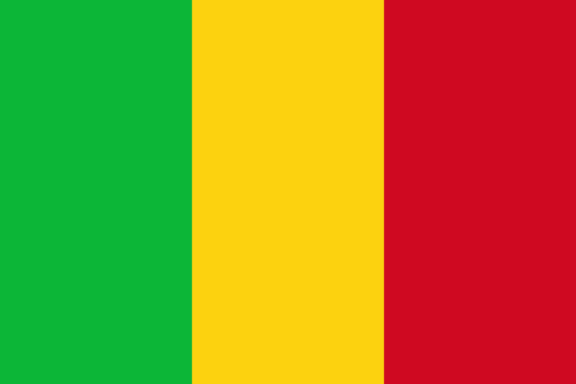
The flag of Mali presents a bold and unembellished design comprising three equal vertical stripes. This straightforward arrangement holds significant meaning, representing the nation’s essence and journey through history.
The flag’s structure, devoid of complex emblems or icons, speaks to Mali’s straightforward approach to its nation. The three distinct colors in vertical alignment symbolize a balance between tradition and progress, emphasizing Mali’s respect for its past and aspirations for its future.
Flag of Mali: Color Palette
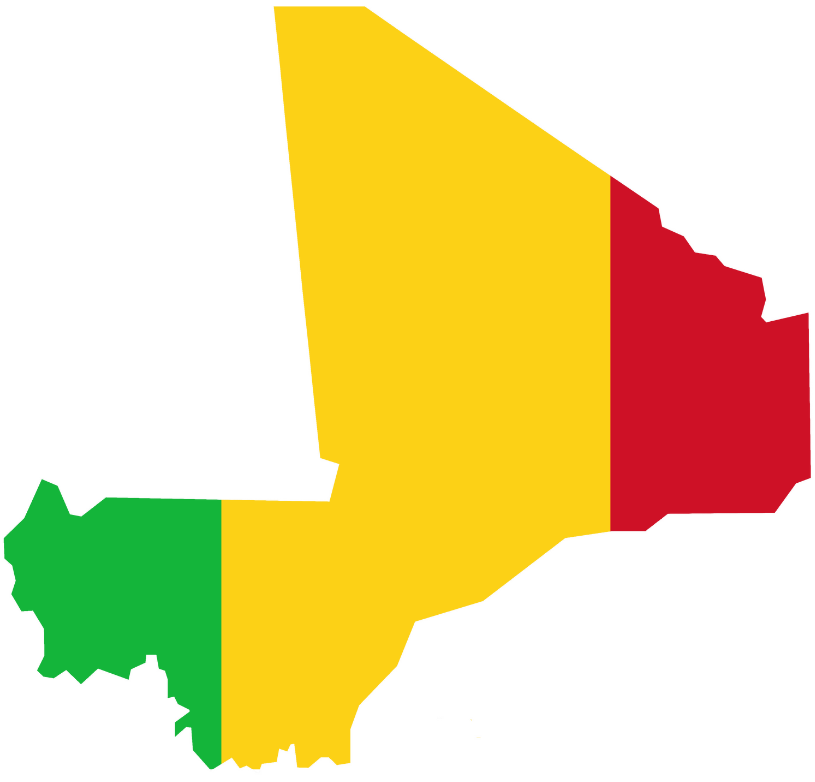
Mali Flag Emoji: 🇲🇱
Mali’s flag’s color palette is symbolic and visually striking. Each color in this triad holds significance and collectively forms a harmonious blend reflecting the nation’s character and values.
This palette serves as more than just a visual identifier; it encapsulates key aspects of Mali’s cultural and historical narrative, poised to be explored in depth in the following section.
Meaning of Each Color
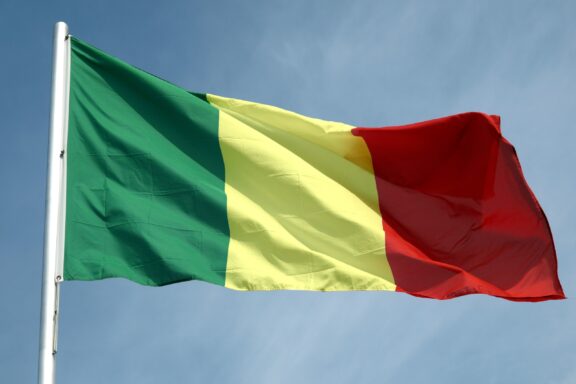
Green
The green stripe in Mali’s flag symbolizes the land’s fertility. This color reflects Mali’s agricultural heritage and the natural richness of its environment.
Historically, green has been associated with growth, renewal, and the life-giving aspects of nature. In Mali, green underscores the importance of agriculture and the country’s connection to the earth, which has been the backbone of its economy and culture.
Gold
The gold (or yellow) stripe represents purity and Mali’s abundant mineral wealth. Gold is particularly significant as Mali has been historically renowned for its extensive gold reserves.
This color also symbolizes the sharp, bright sun that dominates the Malian landscape, a nod to the country’s geographical location and climate.
Red
The red stripe symbolizes the blood shed for Mali’s independence from French colonial rule. This color reflects the Malian people’s courage, sacrifice, and resilience in their fight for freedom.
Red, often associated with strength and determination, commemorates the struggles and victories of the nation’s past and serves as a reminder of its people’s enduring spirit and bravery.
Coat of Arms of Mali
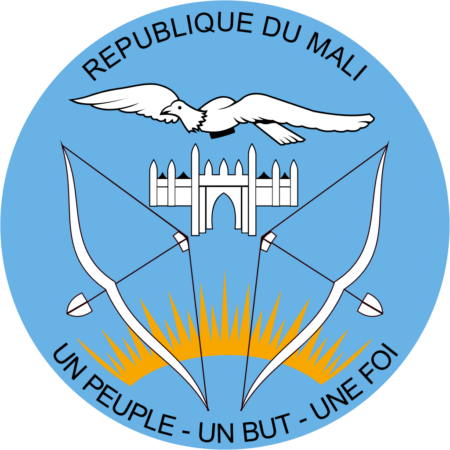
The Coat of Arms of Mali, adopted in 1973, is rich in symbolism and reflects key aspects of the nation’s identity and values. It features:
- A light blue circle: representing the sky and freedom.
- A vulture flying above the mosque of Djenne: symbolizing vigilance and protection. The mosque, a key religious and historical site, signifies the importance of faith and heritage in Mali.
- A rising sun below the mosque: symbolizing hope, a new beginning, and the promise of a bright future.
- Bows and arrows on either side of the sun: indicating readiness and defense, highlighting the importance of safeguarding peace and independence.
- The national motto, “Un Peuple, Un But, Une Foi” (One People, One Goal, One Faith): encapsulating the unity, shared aspirations, and resilience of the Malian people.
The coat of arms thus presents a blend of cultural, historical, and aspirational elements that define Mali. It emphasizes the nation’s commitment to unity, vigilance, and a hopeful outlook toward the future.
Historical Evolution and the Meaning Behind Changes
The evolution of Mali’s flag is closely linked to the nation’s history and path towards self-identity. Originally, during the Mali Federation period with Senegal, the flag included a distinct cultural symbol, the Kanaga figure, on the gold stripe. However, this emblem was short-lived.
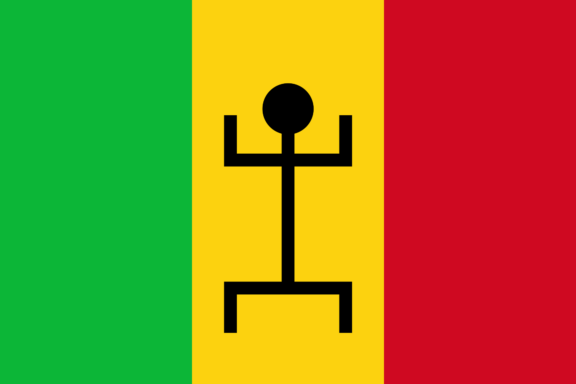
With Mali’s complete independence in 1961 came a significant change. The Kanaga, a human figure, was removed with respect to the Islamic beliefs predominant in the country, which often discourage the depiction of human forms. This led to the current design: a simple tricolor with no additional figures or emblems.
The flag’s colors, shared with many African nations, reflect Mali’s solidarity with the Pan-African movement. These colors are symbolic, representing the nation’s identity and aspirations without explicitly referring to specific meanings.
The current flag thus serves not just as a national emblem but as a symbol of Mali’s place within the broader context of African unity and independence.
Overall Syobmlic Meaning of the Flag
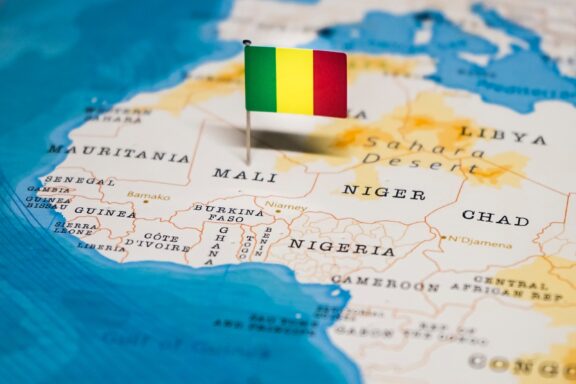
The flag of Mali is a symbol of national unity, embodying its people’s collective journey and spirit. While individually significant, its colors reflect the country’s harmonious blend of history, resources, and aspirations. This emblem is a testament to Mali’s resilience and unified vision for the future.
Similar Flags to the Flag of Mali
Mali’s flag shares its color scheme with several other national flags, reflecting a common thread in their historical and cultural narratives.
Senegal
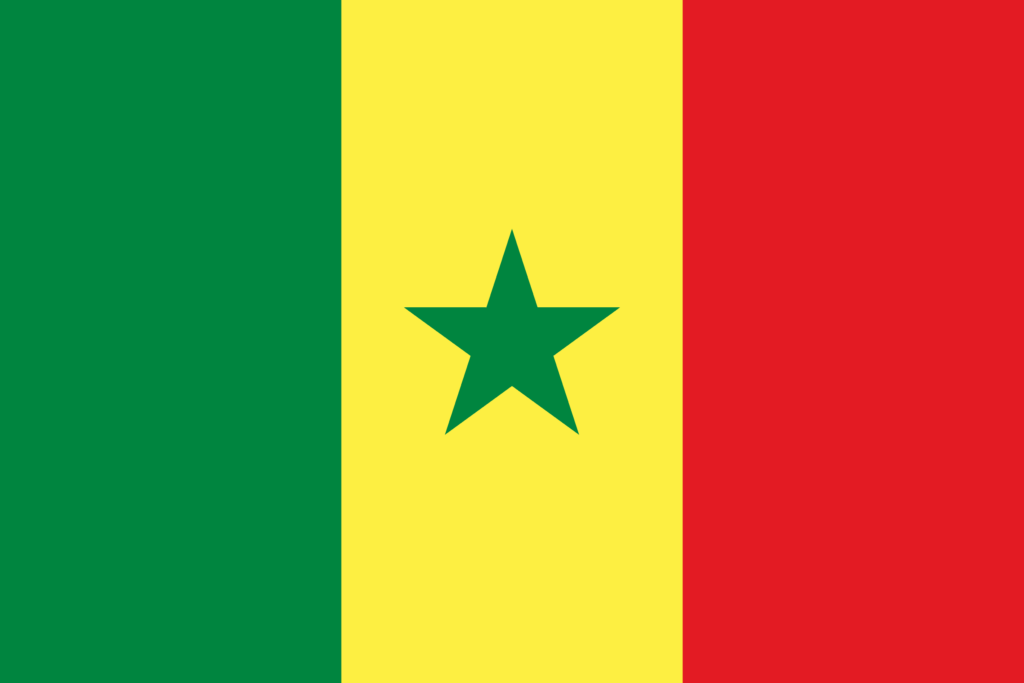
The flag of Senegal features the same set of colors arranged in vertical stripes, much like Mali’s flag. The key difference is the presence of a green star in the center of Senegal’s flag. The resemblance is due to their shared history, as Mali and Senegal were once part of the Mali Federation.
Guinea
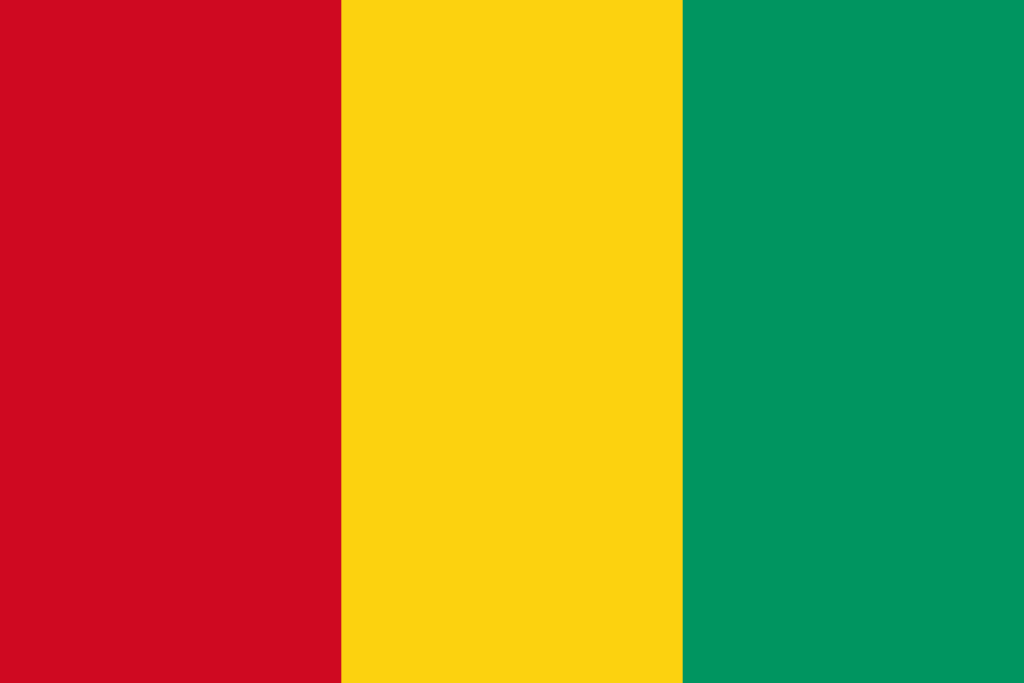
The flag of Guinea is another close resemblance, using the same colors in a vertical tricolor. However, the order of the colors is reversed in Guinea’s flag. This similarity is rooted in their mutual participation in the Pan-African movement and shared colonial history.
Cameroon
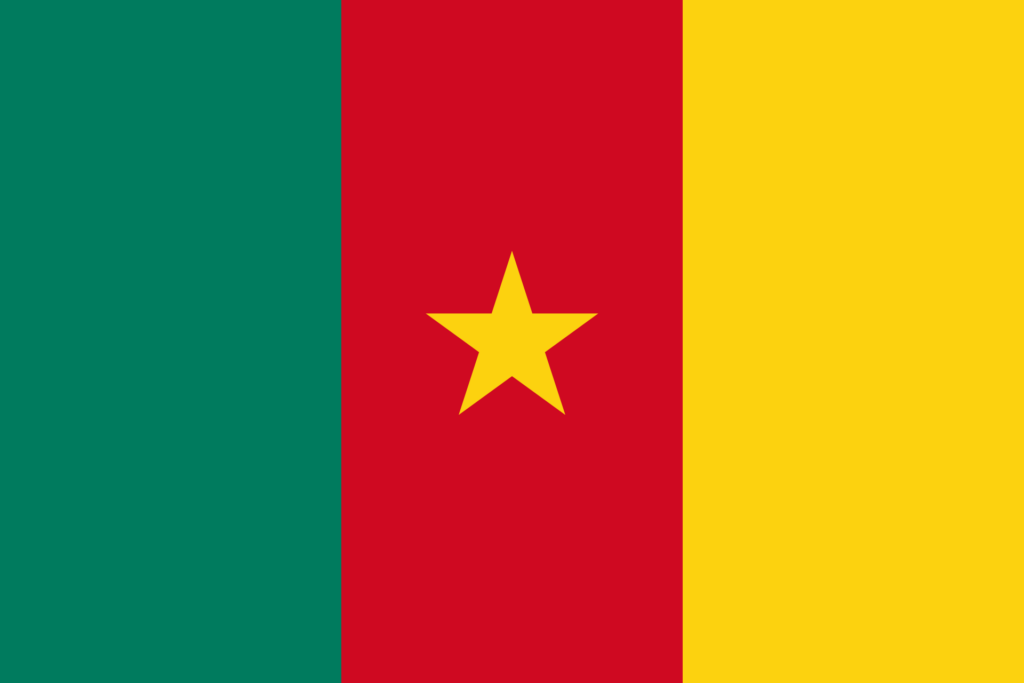
Mali’s flag shares a color scheme with Cameroon’s flag, highlighting a connection in their historical and cultural stories. The flag of Cameroon, like Mali’s, features the Pan-African colors of green, red, and yellow, a testament to shared values and histories among many African nations.
This similarity underscores a broader narrative of unity and collective identity across the African continent.
Final Thoughts
Mali’s flag, rich in symbolism and meaning, stands as a testament to the nation’s history and unity, reflecting its significant place among the global community of nations and embodying the pride of its people.